Last week, Fightful reported that a memo was sent to AEW to talent setting out an updated list of moves that are either banned outright on AEW shows as well as moves that require permission before being used (the AEW List). A quick look at the actions that make up the ‘hard’ and ‘soft’ bans on the List may help.
The following moves are now formally banned from AEW shows:
- Unprotected shots to the head
- Shots to the back of the head
- Buckle bombs/Blind moves backward into the turnbuckle (which may preclude Seth Rollins from jumping ship whenever his contract comes due)
- Fencing response/seizure sells (last used by Bryan Danielson, who really should know better given his own history)
- Spitting
- Blood in the crowd (i.e., no bleeding while in the crowd and no throwing bloody gear, tape, or other objects in the crowd.)
- Weapons/projectiles in the crowd
- Taking drinks or food from guests in the crowd
- Physical contact with the crowd (e.g., wrestler holding opponent and allowing a fan to chop them)
Moves (or maybe ‘spots’ would be a better term, since many of these are extraneous to an actual wrestling match) that require advance clearance include:
- Bumps on the ring apron or outside the ring (which has become overused across promotions, starting with pre-AEW Ring of Honor)
- Any spot with tables/ladders/chairs
- All variations of piledrivers, hurricanranas, and sit-down drivers
- Using weapons and throwing objects
- Choking with hands or weapons
- High risk dives and top rope moves (at least this requires permission, rather than an outright ban like that which dulled WCW matches under Bill Watts in the early 1990s)
- Bleeding on purpose (I’ll get to this later. Spoiler: Jon Moxley figures prominently)
- Injury spots
- Any spots or brawling in the crowd
- Any spots involving non-wrestlers like referees and managers
Of course, the idea that moves or behaviors should be banned is as old as wrestling itself. On-screen, differences in rules and their enforcement helped differentiate one promotion from another. When I was growing up throwing an opponent over the top rope was grounds for immediate disqualification in the American Wrestling Association (AWA) or National Wrestling Alliance (NWA) but allowed in the World Wrestling Federation (WWF).
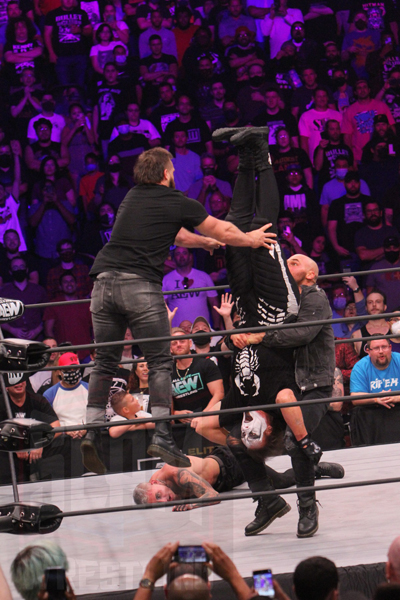
FTR piledrive Sting at AEW Dynamite at the Prudential Center in Newark, NJ, on Wednesday, September 15, 2021. Photo by George Tahinos, https://georgetahinos.smugmug.com
Signature moves like the piledriver would also be banned as a matter of course, or temporarily to further storylines. Some particularly ‘high risk’ moves would engender bans like the tag team spike piledriver.
As mentioned, Bill Watts introduced a host of rule changes when he became Executive Vice President of WCW in 1992, most notably banning moves from the top rope. Most of these bans were honored in their breach-dastardly heels could work whole matches around distracting the referee in order to score tainted victories.
In the big leagues, wrestlers fight under a whole set of office-mandated rules. Internal WWE memoranda leaked over the years have established an extensive “You Can’t Do That On Television” list for it’s Superstars.
Reasons for the bans vary, including the level of risk of harm to performers, historical or anecdotal injuries, the likelihood that someone-particularly a child or middle-aged wrestling columnist will get hurt trying the move at home, or unwanted associations with events that put wrestling in a negative light. While some of this is conjecture, the list of banned moves includes piledrivers, chair shots to the head, curb stomps (which seem to fall in and out of favor), punt kicks, Canadian Destroyers, shooting star presses and 450 splashes (really most top rope moves that require enough rotation that the wrestler doing the move lacks control over their landing), vertebreakers, brainbusters, the original version of the Pedigree (where Triple H held on to his opponent’s arms while driving his face into the mat; in one case accidentally delivering an unprotected shoot-piledriver to an opponent on a Saturday morning syndicated show), burning hammers, muscle busters, and styles clashes. Most of these bans include exceptions for stars who have demonstrated they can perform them safely, like the Undertaker and Kane’s tombstones.
WWE personnel are also banned from using certain terms on the microphone. On top of the standard “seven words you can’t say on television” made famous by comedians Lenny Bruce and turned into a legendary routine by George Carlin, which seems quant today, if you ever watched ‘Deadwood’ or WWE in the Attitude Era.
The list, which changes over time, includes:
- Belt
- Our Industry
- Pro Wrestling
- Pro Wrestler
- The Title is on the Line
- House Show
- Title Shot (It’s An Opportunity)
- Strap
- Performance
- Hospital
- Sports Entertainment
- Title Changing Hands
- Faction
- Talent
- Performer
- Title Match
- War
- Interesting
- The Business
- Feud
- Fans
- Crazy
AEW has couched its own List in its ongoing efforts to protect wrestlers, fans and others who work for the company. A close reading of an excerpt from the memo suggests that something more may be going on. The AEW List includes moves that are no longer “allowed under any circumstances”. They are “prohibited for your safety, safety of the staff and crew, safety of our fans, and compliance with laws and venue requirements”.
The last two clauses are of interest. While health and safety should be paramount concerns for any sports or entertainment company (in pro wrestling they are often shamefully neglected), the legal and business issues are clear.
We like to think of modern pro wrestling as a self-contained universe. Wrestling companies large and small have a host of obligations to meet before the show starts. Venues must be booked, bringing with them contracts that may limit how a building and its’ contents may be used (which may curtail jumping off balconies or pratfalls down staircases or using materials found on site as weapons). Chairs and other potential plunder may be supplied by the venue or brought by the promotion; in either case anything nailed down should stay that way, or the promoter may be staring down an inflated bill for damage to property. Different venues and jurisdictions may have insurance requirements against property damage and for the health and safety of those using facilities. Filing a claim can be expensive and limit insurability going forward, making it harder to run shows.
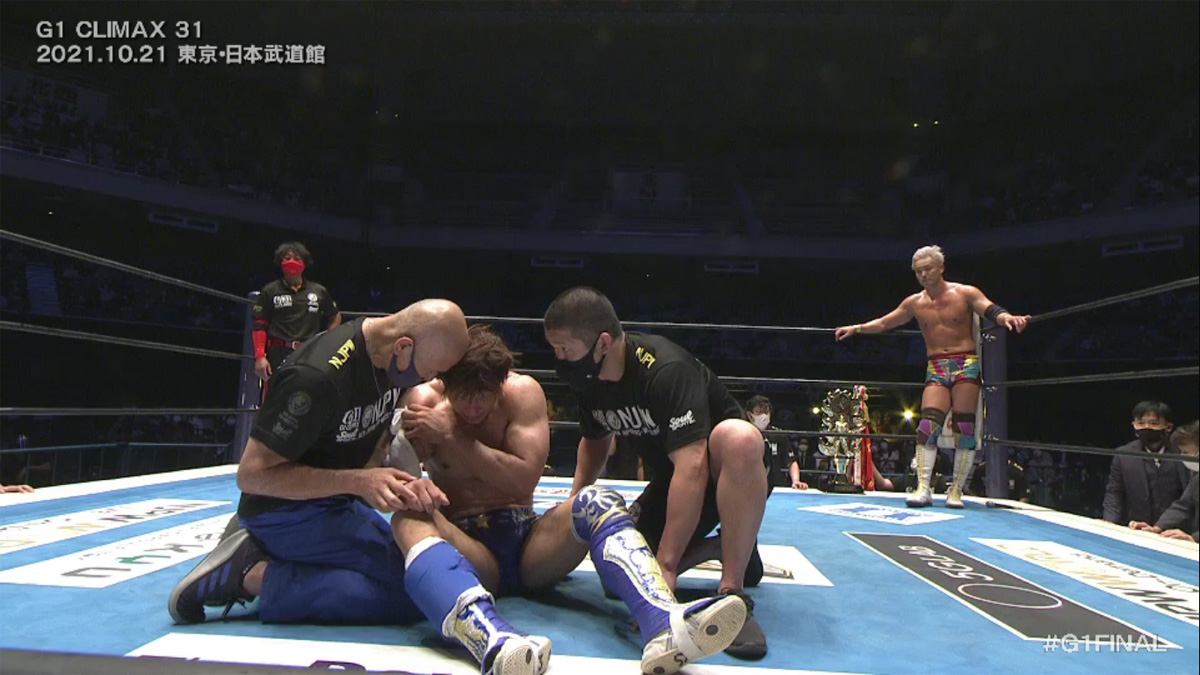
Kota Ibushi receives medical attention after being injured in the ring. Courtesy: NJPW.
A claim will often be denied if the act giving rise to it falls outside what one would consider normal use, like Jeff Hardy climbing the rafters and falling on his opponents from a great height with fans surrounding a breakable table in an open concourse. As a former insurance defence litigator I can tell you that pursuing a claim in court is even more arduous and expensive, and unlikely to enrich anyone but the lawyers. Yay lawyers! Wrestling shows also often come with requirements to have first-aid personnel on standby in the hopes they will not be needed and in the face of large bills if they are.
In some jurisdictions pro wrestling still falls under the auspices of State Athletic Commissions or other bodies empowered by local (city or municipality) by-laws. If you recall Ric Flair’s retirement match last year, it was held in Tennessee in part because their Athletic Commission steers clear of wrestling. Given the history of wrestlers’ political involvement in that area I’m not surprised.
Lest you think this is a new phenomenon, in 1957 the WWE’s predecessor organization Capitol Wrestling was almost banned from Madison Square Garden following a riot that broke out during a match between Dr. Jerry Graham and Dick the Bruiser vs. Edouard Carpentier and Argentina Rocca. That match included several items one might find on the AEW List. In a podcast recounted on prowrestlingstories.com Dr. Graham noted that the crowd was sparked when he drew blood from Rocca and goaded Rocca’s Puerto Rican fan base after the match had officially ended. Rocca retaliated by ramming Dr. Graham’s head into the ring post for more blood. Dick the Bruiser was either attacked by or started assaulting fans in the crowd while others tried to charge the ring to save their heores. Police were called and Dr. Graham was fined $3000 for inciting the riot-about $32,600 adjusted for inflation today. Wrestling would return to MSG the next month but children under 14 would be barred from the shows for almost 20 years-an unthinkable prospect for a product that we now consider family-friendly. Dick the Bruiser would work New York again, but his part in the riot became legend. He would claim that he was banned from the arena for life and kept up this part of kayfabe long after his retirement.
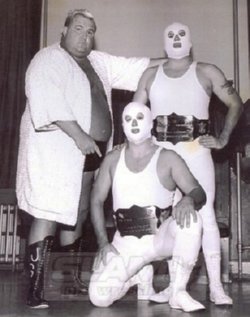
Dr. Jerry Graham and the Interns.
In Ontario, where I live, pro wrestling used to be governed by the Athletics Commissioner, who oversees the Athletics Control Act. Regulation 52 made under that Act still includes a provision which states “No person shall hold a professional contest or exhibition of wrestling where male and female wrestlers are in the ring at the same time.” This provision had largely gone unenforced until about 2002 but is liable to come up again particularly as some wrestlers and fans push for intergender matches. Violating the Commission’s rules may result in fines and could lead to a venue losing its license to operate. The threat of this is enough to make venue owners reconsider hosting pro wrestling events. I know of one independent promotion that ultimately went out of business in part because, after running several successful shows with ‘hardcore’ elements, the venue owner got cold feet and the promotion couldn’t find another sustainable site willing to bear the risk. That and the fact that after each show, the washrooms needed to be cleansed with fire.
Of course, a ‘banned’ list is only worthwhile if it sets out appropriate consequences. ‘Choking’ spots have been effectively banned by WWE since Chris Benoit strangled and asphyxiated his family then hung himself. This appears to be a pretty hard and fast rule. In 2010 Bryan Danielson was fired from WWE at the outset of the Nexus angle, when he choked ring announcer Justin Roberts with the latter’s tie as part of a Nexus takeover of Raw. Danielson would later comment that WWE officials fired him for his release, claiming that sponsors would find the mock strangulation too violent. Danielson would be rehired shortly thereafter and his career has turned out okay
The threat set out AEW’s memo is a fine-and one can imagine wrestlers who are driven to push boundaries in order to set themselves apart being willing to take a financial hit. WWE has meted out considerable fines, particularly to wrestlers who drew blood post-Hulkamania. Ric Flair and Randy Savage were allegedly fined $5,000 each for blading during their WrestleMania VIII main event. Flair was openly caught on camera gigging himself. Bret Hart apparently bled on purpose earlier on the card, but he more excellently executed the cut and WWF honcho Vince McMahon believed that Bret was legitimately injured. Almost 20 years later Batista would draw a huge fine for blading during a World Heavyweight Championship match against Chris Jericho on RAW. At the time, WWE was in the middle of walking its content back from TV-14 to PG. Batista was fined $100,000. Jericho was fined $5,000 as were the match’s referee, Mike Chioda and agent Dean Malenko. Batista would pick up the tab for all three men. Following WrestleMania 27 Triple H and the Undertaker were each fined an undisclosed amount for levelling unprotected chair shots to the head. Randy Orton and Daniel Bryan would also receive fines for chair shots following a 2013 Street Fight.
From the performer’s perspective, pro wrestling is like most contact sports, consent to a series of assaults within boundaries set by the rules of the game. Accidents may happen, and are frequently subject to ‘receipts’ between wrestlers, where a wrestler who hurts his or her opponent can expect to be hurt in return as a signal to be more careful. The fact that the show depends on performers to be healthy in order to advance storylines and maximize audiences (and revenue) means that wrestlers have an obligation to take care of each other’s bodies. While outcomes are staged and spots are called, the physicality between performers can turn real in the name of putting on a show for a jaded, sometimes bloodthirsty audience. That said, even in full-contact sports like hockey, football and boxing, an athlete may face criminal charges or civil liability if an act of violence goes beyond what one might normally consent to in the field of play.
In hockey alone, as far back as 1905 Allan Loney was charged with manslaughter In the on-ice death of Alcide Laurin. He was found not guilty. From 1969 to 1980 there were a host of incidents resulting in criminal charges against players including Ted Green, Wayne Maki, Dan Maloney, Dave Forbes, Philadelphia Flyers players Joe Watson, Mel Bridgman, Don Saleski and Bob “Hound” Kelly, and Dave ‘Tiger’ Williams. In 2000 Marty McSorley was found guilty of assault with a weapon after hitting opposing enforcer Donald Brashear in the head with a stick during an NHL game and in 2004 Todd Bertuzzi sucker punched Colorado Avalanche player Steve Moore in the back of the head, resulting in Moore fracturing three vertebrae and sustaining a grade three concussion. Bertuzzi pled guilty to assault causing bodily harm and a $68 million civil lawsuit filed by Moore would later be settled out of court.
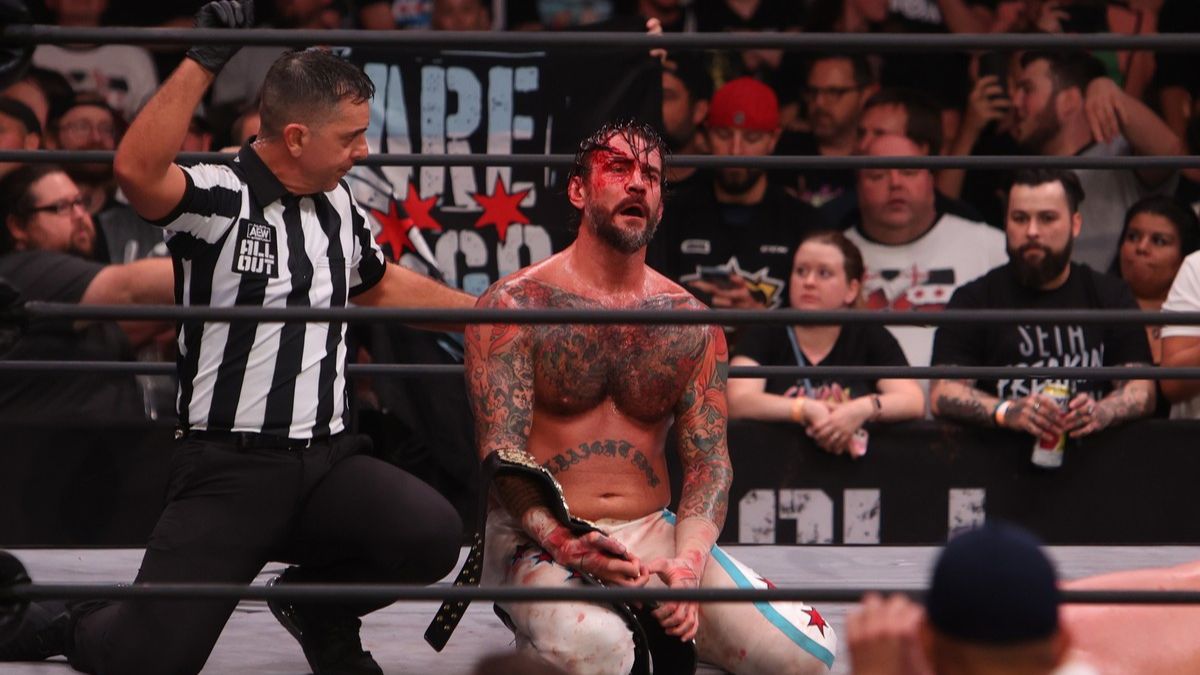
A bloody CM Punk. Courtesy: AEW.
As for the reason behind the AEW List, an educated guess might also be that a directive to tone down the violence and other objectionable conduct came from Warner Bros. Discovery standards and practices. AEW is still growing it’s TV presence and may still be looking for a televised home for its secondary Ring of Honor brand. Their newest show, Collision, airs at 8 pm on Saturday-a day and time which I’ve said is more likely to attract an audience that would rather not be bled on (streaming notwithstanding). The entertainment world has its own rules and consequences for breaking them. I mentioned the ‘seven dirty words’ earlier, but TV censorship has long been a subject for discussion. From the 1930s and 60s a series of rules called the Hays Code set guidelines prohibiting profanity, nudity, violence and sex. It also set rules regarding presentation of crime, costumes, dance, religion, ‘national sentiment’ and morality. It’s why Lucy and Desi slept in separate beds, or Clark Gable appearing sans undershirt in Gone with the Wind was considered transgressive, or why the Ed Sullivan ordered Elvis Presley to be filmed only from the waist up.
Hays Code aside, entertainers flout these rules at their peril. Comedian Jackie Mason made several appearances on the Ed Sullivan show. In 1964 as the result of a miscommunication with off-screen personnel, Mason allegedly flipped Sullivan off, on-air. Mason would be banned from the show thereafter and his contract with the show worth $45,000 (now about $425,000) would be cancelled. While Sullivan and Mason would make amends, the incident branded Mason’s act as obscene and cost him 20 years of TV work. Howard Cosell, whose career had been in part defined by his support of Black athletes like Muhammad Ali during the Civil Rights movement, damaged his career in a 1983 Monday Night Football broadcast when he used a racially derogatory term to describe wide receiver Alvin Garrett’s play. Cosell and others, including Ali, Rev. Jesse Jackson and Garrett himself have suggested that the term was not intentionally racist but the damage was done. Sports commentator Jimmy ‘the Greek’ Snyder was justifiably fired from his job with CBS in 1988 after suggesting in an interview that breeding practices during slavery had led to Black athletes’ superior performance. NBC comedy show Saturday Night Live has banned multiple hosts and bands for infractions including poor treatment of cast and writers, ad libbing during the show, diverging from an agreed-to set lists and making unauthorized political statements. In 1981 cast member Charles Rocket was summarily fired for saying the F-word live on-air. Jenny Slate did the same in her first episode in 2009. She lasted the year but rarely appeared in a significant role, and her contract was not renewed.
Since pro wrestling straddles the worlds of sports and entertainment it makes sense that AEW must be mindful of both sets of rules.
Some fans seem upset by AEW’s move to limit or eliminate behaviors that could jeopardize performers’ and fans’ safety, get them kicked out of arenas or off TNT and TBS, or raise the ire of any number of regulatory agencies. They see AEW as ‘selling out’. I see AEW ‘growing up’. Reviewing the list most of the actions listed already happen rarely on AEW broadcasts. Wrestling Observer’s Dave Meltzer has noted that the memo merely codified a set of rules which were already established, meaning for most talent it’s business as usual. I would argue that in some respect the ‘banned’ list is a creative win. It eliminates or minimizes a host of tactics that wrestlers can use to generate cheap reactions from the crowd; tactics that in a largely unregulated independent wrestling scene (and in AEW’s early days) could be used as crutches to get over. Where these tools are too readily available, talent can’t help but rely on them, which leads to repetition across a card and dilutes their impact. Early AEW broadcasts were notorious for featuring redundant segments-often backstage beatdowns or confrontations between factions. I would suggest that Tony Khan’s taking the creative reins relatively early has prevented AEW from become full-on Vince Russo style car crash TV.

The Varsity Blonds (Brian Pillman Jr. & Griff Garrison) brawl with The Acclaimed (Anthony Bowens and Max Caster) at AEW Rampage at the Prudential Center in Newark, NJ, on Friday, September 17, 2021. Photo by George Tahinos, https://georgetahinos.smugmug.com
AEW has course-corrected before. Wrestlers once swore freely on-air during broadcasts. I have no problem with foul language. Sometimes a curse word is the right word to fit a situation. But again, when every wrestler thinks it’s the only way to emphasize a point, the overall effect is to minimize that value of that language. As a fan I buy a deranged street fighter like Jon Moxley swearing; he’s barely in control of himself on any front. I also understand a furious opponent like Eddie Kingston or Adam Page or CM Punk firing back. When Jungle Boy swears it feels like my seven-year-old experimenting with bad language in the school yard. As I tell my kids, English is a wonderfully expressive language. While a ‘bad’ word may be the right word, you’re probably better off choosing one of the many ‘clean’ options to make your point.
AEW’s recognition that certain spots need to be eliminated or walked back for the sake of a broader, more inclusive audience is a net positive. Fans who desire a real ‘hardcore’ show like Paul Heyman’s Extreme Championship Wrestling (ECW), Rob Black’s Xtreme Pro Wrestling (XPW) or Combat Zone Wrestling (CZW) have an outlet in the current Game Changer Wrestling (GCW) which often oversteps the line into ‘garbage wrestling’. While these promotions have a passionate fanbase, they’re still very niche and unlikely to expand to reach a broader audience. Meanwhile, they stand to lose the talent they create to bigger, more mainstream promotions that offer larger paycheques for less risk. When I was in University I worked at a clothing store. My manager once told me that “a business either grows or it dies”, as the store launched an aggressive expansion of its’ brand. The AEW List is part of the growth process. It’s also worth noting that many items on the List including choking with hands or weapons, high risk dives and top rope moves (which are essential to AEW’s Lucha Libre contingent), bleeding on purpose and injury spots can still be employed if they’re cleared with AEW management beforehand. The tools are still available; they just have to be used more judiciously.
In fact, I’d argue that the AEW List may not go far enough.
In one of my first columns I decried AEW’s overreliance on blood and for the most part it seems like they’ve toned it down. Moxley, who figures into AEW’s future as a coach if he lives that long, continues to flout that trend. Apart from his extra-AEW sojourns into garbage matches, human pincushion cosplay and Bloodsport, Moxley has made a point of bleeding in his matches, no matter who he’s fighting or what position he occupies on the card. This violates norms governing how a wrestling show is structured. Blood is useful to add drama to a main event match or when blowing off an intense feud between heated rivals or, occasionally when drawn by a madman like the Sheik or Abdullah the Butcher whose sadism is an integral part of their act. Despite the fact that it is self-inflicted, a wrestler’s bloody forehead telegraphs that while the other matches on the card may be ‘fake’, this is as viscerally real as it gets.
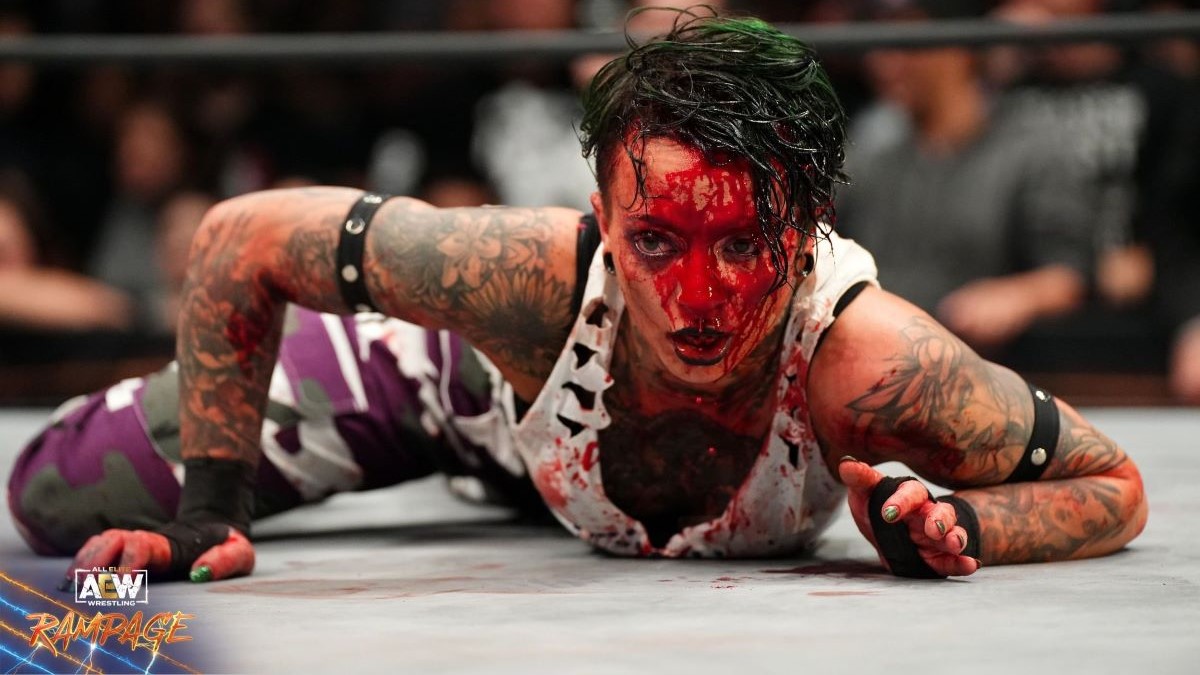
Ruby Soho after an AEW Street Fight. Courtesy: AEW.
If Moxley got that memo, he’s choosing to ignore it. In a recent interview with Sports Illustrated, Moxley defended his promiscuous bleeding as follows:
“…I only know one speed. That’s with my foot to the gas pedal. If we’re going to do something, let’s f—ing do it. That can be detrimental when it comes to negative things, like drugs or alcohol. But that’s my mindset. If I’m doing it, I’m doing it.
When it comes to blood, it’s just going to happen sometimes. Like I said, it’s foot to the gas pedal. Some people say, ‘This is just a random match. Why is there blood?’ I heard that last week vs. Tomohiro Ishii. He’s one of the greatest of all time. I’m not going to let that moment slip by. I’m going foot-to-the-f—ing-gas-pedal. How can I not? Then I hear that I can’t have a good match without blood. O.K., then, you made my argument for me. I’ll do it every time.
The point of the dissertation is that this is a combat sport. But we’re not allowed to have blood in a match unless it’s a personal grudge? We’re only allowed to have blood after a five-month grudge after someone slept with somebody’s wife or somebody ran over someone with a car? And then—and only then—are we allowed to have this dramatic crimson mask that looks the exact same every single time? For me, realism-wise, since this is a combat sport, that means there is the potential for blood in every match. Everything in wrestling is preposterous to some degree, but this helps with the suspension of disbelief”.
I’m actually for less blood but more often. If every single match on the card had a busted eyebrow or bloody nose, it would just be part of the sport. But some gory spectacle with blood shooting like a hose is pretty unnecessary. We’re elbowing each other in the face every single match. We’re kicking each other in the face every single match. What are these people made of if they’re not bleeding?
People ask why there is blood in the ring every time I leave it. It feels unnatural to go out of my way to make sure no one is bleeding. That feels like I’m taking my foot off the gas pedal. That doesn’t interest me.”I can appreciate Moxley’s argument, to a point. If you’ve ever watched a Mixed Martial Arts or boxing match, you know that undercard fighters don’t avoid hitting each other to make the main event look better. Bare-knuckle boxing is growing in popularity in part because it promises more damage faster, from the first bout to the last. But those sports are presented as ‘real’, something that despite Moxley’s ‘dissertation’, professional wrestling left behind long ago. We all know it’s entertainment, and the idea of eagerly waiting for performers to legitimately maul themselves for our cheap thrills seems disordered. I might give Moxley’s argument more heft if he didn’t frequently blade with the camera trained on him. His argument that blood makes a match more authentic loses steam when he’s caught in the act of dragging his gimmick across his forehead.
As noted in his interview, a few weeks ago Moxley fought Japanese wrestler Tomohiro Ishii in a senselessly bloody match on Dynamite. “Senselessly” is a relative term when it comes to Mox, who has made his belief that all matches could be bloody known. In this case the claret started flowing freely for both men in the opening minutes of the match. The contest featured extended sequences where Moxley and Ishii traded punches and forearms with their hands down like a pair of wannabe Butterbeans. It also saw them trade headbutts while blood flowed from their open wounds. Some fans appreciated the gory spectacle. I wondered how stupid both men had to be to resort to this performance despite the fact that they can and have carried off plenty of great matches without the mess. I also hoped that both men got clean blood tests before and after. I don’t know Ishii’s personal situation, but for Renee Paquette’s sake (and that of the daughter that Mox comes home to) risking a serious blood-borne illness for the sake of a TV opener seems like a dumb risk.
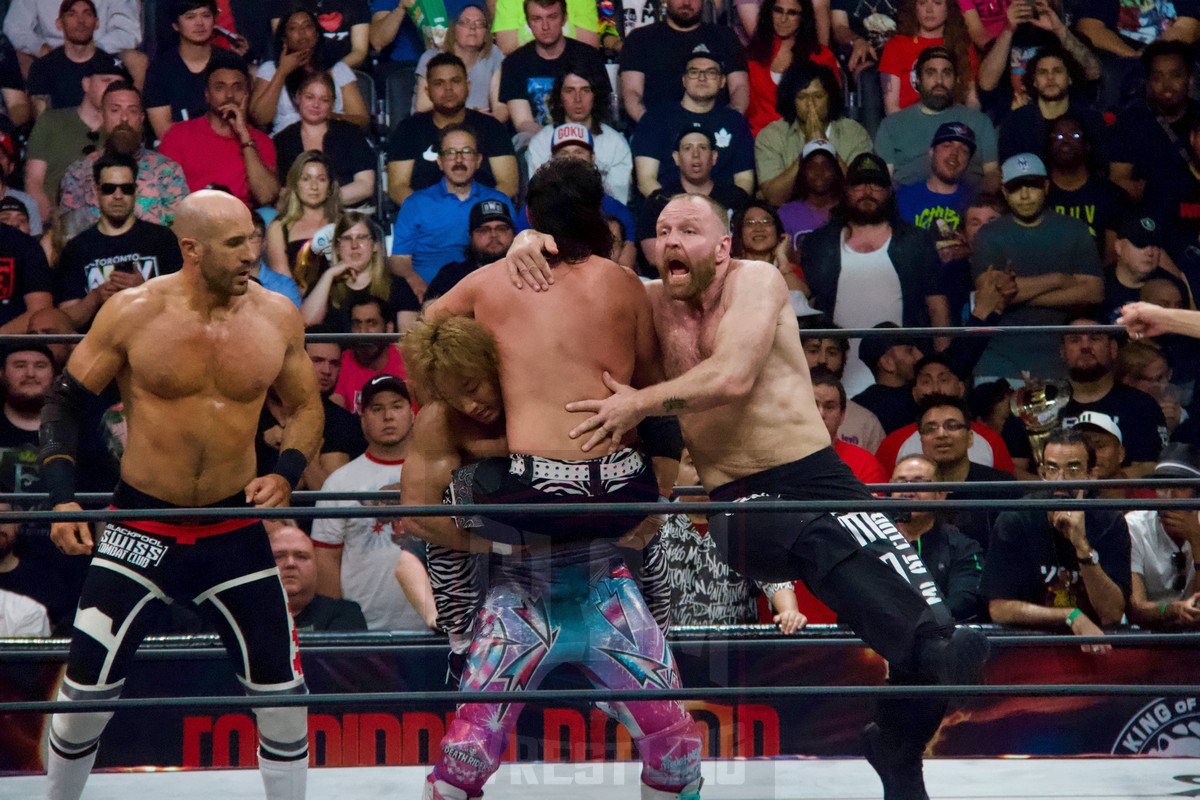
Blackpool Combat Club (Jon Moxley, Wheeler Yuta & Claudio Castagnoli), Konosuke Takeshita & Shota Umino Vs. Eddie Kingston, Tomohiro Ishii & The Elite (“Hangman” Adam Page, Matt Jackson & Nick Jackson) at AEW-NJPW Forbidden Door at the Scotiabank Arena in Toronto, Ontario, on Sunday, June 25, 2023. Photo by Steve Argintaru, Twitter: @stevetsn Instagram: @stevetsn
My wife, who’s not a wrestling fan per se but often keeps me company when I watch (as I do when she watches any show beginning with ’90 Day Fiancee’), was disgusted. “This isn’t wrestling” she said. And while I might have argued the point historically I don’t think she’s wrong. The art of pro wrestling lies in the simulation of violence, accepting that accidents happen. Moxley’s self-mutilation in full view of the camera served no purpose except to argue that Tony Khan might want to specifically add open blading and spots where wrestlers actively bleed into each others’ open wounds outright to the fully banned list: the latter for health and safety reasons, and the former because it exposes the business in the stupidest, most self-destructive way possible.
So let AEW leverage its List to help the company grow. And let AEW talent figure out how to leverage the List to put on the best, most meaningful matches possible. After all, if there’s one thing I’ve learned, sometimes the value of rules in how artistically you can bend them.
RELATED LINK
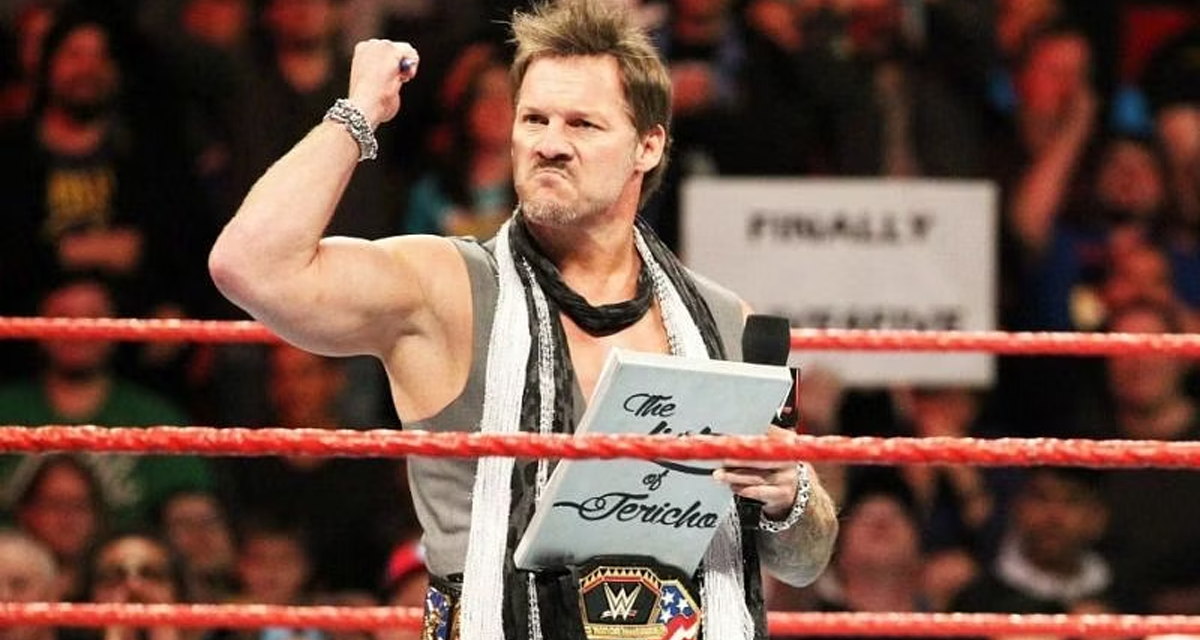

I feel pretty much the same, but maybe it shows that I’m an old fan, watching wrestlers like Carpentier, Vachon, Bravo on cards in my town, in my youth. The only time we had blood on a card was with, of course, Abdullah and Bravo in a cage. It was special. Today, some fans are not really fans of wrestling. They don’t care about the storytelling in the ring, the promos, my favorite part of it. They should watch UFC, but UFC is so lame these days, without any real stars and pretty much every fighter going after the KO in the first round. But, to each their own.